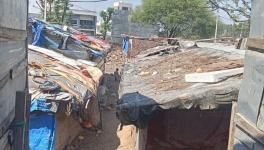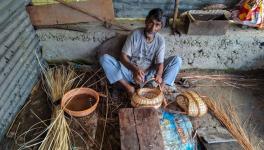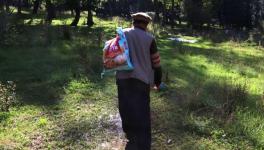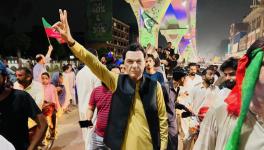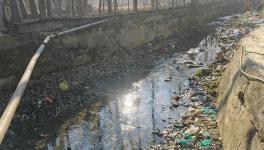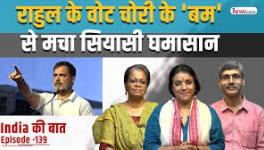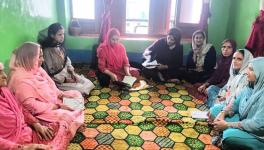Constitutional and Institutional Mess Across Line of Control
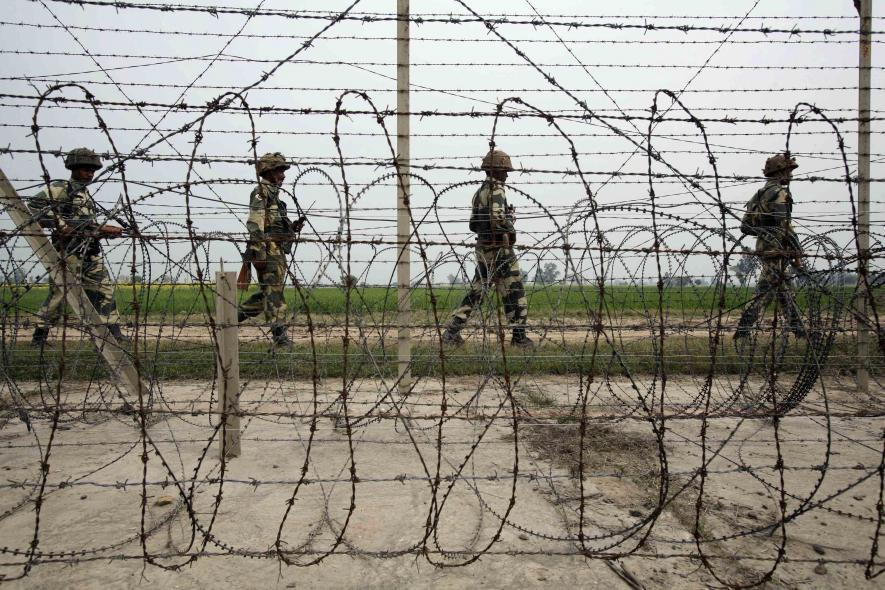
Image for representational use only. File image
Epitomising the constitutional and institutional mess across the Line of Control (LoC), in late April, Pakistan-administered Jammu-Kashmir (PAJK) got its third Prime Minister in less than two years. The development coincides with even more important events triggered by former prime minister Imran Khan’s Pakistan Tehreek-e-Insaf (PTI) protests and the Pakistan Army’s ensuing crackdown, which have garnered international attention.
Changes in the PAJK may, indeed, seem rather inconsequential considering the instability regarding the PTI and the Pakistan military establishment. But from a long-term perspective, they cannot be ignored as they are directly linked to larger questions of India-Pakistan conciliation and understanding the contestation between the two nuclear-armed countries.
For instance, softer borders between both sides of Jammu and Kashmir on either side of the LoC, including the PAJK, were a recurrent feature in India-Pakistan talks, particularly from 2003 to 2007. These talks were blessed by the political executives on both sides, as detailed in revelations by relevant actors. In this connection, it is also relevant to note that the PAJK is a source of one of the biggest diaspora communities in the United Kingdom. Some British nationals born in the Mirpur pocket of PAJK claim that more than half the population living on Pakistani passports in Britain originated in that area. The sheer scale of the diaspora influences British foreign policy, particularly on Asia, but also on other critical issues, in decisive ways, and this trend will continue.
For decades, the Pakistani State has diplomatically showcased PAJK to the global community as a separate country with its Constitution, a chief executive called the Prime Minister, and a President as the constitutional head. Today’s political developments can be traced immediately to the 2021 election in the region. That election marked the near-complete electoral annihilation of the Muslim Conference, a political legatee of older regional politics. It also saw the amplification of power struggles between caste groups, charges of foul play in favour of the PTI, particularly on seats reserved for refugees, and continuing dissonance between regional linguistic and political identities.
In this connection, as detailed in 2021 by this author, out of a total 53 seats in the PAJK Assembly, PTI won 26 of 45 “general” seats, while the Pakistan Peoples Party (PPP) came in second with 11 seats, and the Pakistan Muslim League-Nawaz (PML-N) won six seats. In the post-election power struggle over the prime minister’s post, the PTI finally picked Sardar Abdul Qayum Niazi. Niazi, who was in the Muslim Conference two years earlier, is from Abbaspur, close to the LoC in central PAJK. Niazi was a political lightweight, and it was said that Imran Khan selected him for their shared caste identity.
After a year, in April 2022, Niazi had to step down. The development coincided with Imran Khan losing the no-confidence motion in Parliament. Sardar Tanveer Ilyas, a wealthy financier to PTI from the Bagh area and belonging to the influential Maldyal caste group with a strong presence in the Pakistani army, became his successor. Another year passed, and another change came in April 2023, when a full bench of the PAJK High Court disqualified Ilyas from his membership of the Legislative Assembly over contempt of court. Ilyas had reportedly indirectly blamed the judiciary for hampering his government and interfering in executive affairs. Also, the contempt conviction allegedly did not adhere to the basic jurisprudential tenet of allowing the accused to explain their position. Anyhow, on 20 April, the PAJK Legislative Assembly elected its Speaker, Chaudhry Anwarul Haq, as the new Prime Minister.
Interestingly, Haq was a joint candidate of the combined Opposition and a 12-member “forward bloc” whose constituents are a new dissident group of the PTI. The Assembly also amended a constitutional provision that earlier restricted the state Cabinet’s size to 16 ministers—now allowing a two-thirds majority. This was done to accommodate all the coalition partners in ministerial positions.
The developments are unsurprising, and fit the age-old dictum that whoever rules in Islamabad rules in PAJK. The person considered instrumental in cobbling up the present ruling coalition of dissident PTI, PPP and PML-N members is Jahangir Tareen, a wealthy businessperson and former secretary general of the PTI.
Apart from its behind-the-scenes role, Pakistan’s polity has a multi-faceted direct involvement in PAJK’s political landscape. The PAJK Constitution provides for 12 reserved “refugee” constituencies within the 45 elected “general” seats for the regional Assembly. These reserved seats are for those who migrated from the Indian side of Jammu and Kashmir in 1947 and settled across Pakistan. Practically, these seats represent constituents who are Pakistani citizens and have little to do with the everyday issues in PAJK. Nine of these 12 seats are actually not in the PAJK at all, but scattered in different parts of Pakistani Punjab, while the remaining three seats are in Khyber Pakhtunkhwa, Balochistan and Sindh.
The larger demographic picture behind this allocation and distribution of the 12 seats is that refugees who arrived from Kashmir and Jammu—the two culturally, ethnically and linguistically distinct provincial units—have been allotted six seats each. However, on the ground, this allocation and their distribution has resulted in an absurdity in terms of representation—for, in 1947, migration from the Kashmir valley was minimal.
Reportedly, in the 2021 election, 3,73,652 [3.73 lakh] were registered in the six constituencies representing the refugees from Jammu, whereas only 29,804 (just 7%) were registered in the six constituencies representing the refugees from Kashmir valley.
In 1947, approximately 80% of migrants from the Indian side of Jammu and Kashmir settled in Pakistani Punjab, not PAJK. Several factors contributed to this phenomenon. Most migration occurred from the Jammu plains, geographically closer to the Sialkot district and culturally similar to the Punjab province. Compared with PAJK, Punjab offered more economic opportunities for migrant communities. Economist Mehboob-ul-Haq, the creator of the acclaimed Human Development Index, universally accepted as a better alternative to Gross Domestic Product as the measure of a nation’s prosperity, was a Jammu immigrant. Pakistan’s famed female singer, Malika Pukhraj, who migrated to Lahore during the 1947 riots, was born in the Hamirpur Sidhar village near Akhnoor in Jammu.
Past trends and experience demonstrate that the party ruling in Islamabad is able to corner the majority of refugee seats, giving the party ruling Islamabad the advantage in government formation in Muzaffarabad, the capital of PAJK. In 1975, Zulfikar Bhutto’s Pakistan People’s Party (PPP) brought down the Muslim Conference government on the strength of these seats. In 1990, the Muslim Conference won all 12 refugee seats and Nawaz Sharif, the then prime minister, boasted that his government had “gifted” these seats to Sardar Qayoom. The pattern replicated in the 2021 PAJK election. The PTI won 75% of the refugee seats, compared with 48% of seats in the remaining 33 elected seats within PAJK.
In December 2007, Sultan Mehmood Chaudhry, currently the PTI chief in PAJK and a top contender for the prime minister’s post, had demanded abolition of the 12 seats reserved in the Assembly for “Kashmiris” settled in other parts of Pakistan. He had alleged that the “ruling parties in Pakistan always manipulate elections for these seats and help install governments of their own choice in the region [PAJK]”.
Constitutional provisions also contest Pakistan’s official and diplomatic claims, such as Article 257, which says, “When the people of the State of Jammu and Kashmir decide to accede to Pakistan, the relationship between Pakistan and the State shall be determined in accordance with the wishes of the people of that State.” On the contrary, Part 2 of Section 7 of the 1974 PAJK Constitution says that “no person or political party in Azad Jammu and Kashmir shall be permitted to propagate against or take part in activities prejudicial or detrimental to the ideology of the state’s accession to Pakistan”. Section 5(2)(vii) of the PAJK Legislative Assembly Election Ordinance, 1970, says a person will be disqualified for propagating any opinion or action in any manner prejudicial to the ideology of Pakistan, and that the ideology of the state’s accession to Pakistan or the sovereignty and integrity of Pakistan. Nobody is allowed to participate in the PAJK Legislative Assembly election without signing an affidavit pledging allegiance to Jammu and Kashmir’s accession to Pakistan. In several polls, the Amanullah Khan-led Jammu and Kashmir Liberation Front and the All Parties Nationalist Alliance (APNA), espousing an independent state of Jammu and Kashmir, were not allowed to participate because they refused to sign such an affidavit.
Overall, the present change in government in PAJK has little consequential impact on the region’s status or any future exercise aimed at Indo-Pak conciliation. But these developments have yet again reaffirmed that they are a part of a continuing trend of institutional deceit and falsified claims about the region’s status as an “independent country”. Practically, its political status does not even equal other provinces of Pakistan.
In Sindh, for instance, the PPP ruled under the Imran Khan-led federal government from 2018 to 2022. Actually, the 18th Amendment to the Pakistan Constitution, passed by the National Assembly in April 2010, aimed to plug the structural anomalies that arose because of repeated military coups. It gave a semblance of federal autonomy to the provinces. The 8th Amendment, which gave the President the power to dismiss any elected government, was removed. However, the political developments of the last decade indicate this is untrue about PAJK, as the party in power in the region mirrors the one in Islamabad. The more important takeaway is that a serious process of conciliation and dialogue between India and Pakistan cannot predicate on self-serving propositions with little bearing on reality. The reality in PAJK illustrates this.
The writer is the author of two books on Jammu and Kashmir, including Across the LoC, Columbia University Press, 2012. The views are personal.
Get the latest reports & analysis with people's perspective on Protests, movements & deep analytical videos, discussions of the current affairs in your Telegram app. Subscribe to NewsClick's Telegram channel & get Real-Time updates on stories, as they get published on our website.









